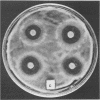Abstract
A variety of lactic acid bacteria, isolated from plant surfaces and plant-associated products, were found to be antagonistic to test strains of the phytopathogens Xanthomonas campestris, Erwinia carotovora, and Pseudomonas syringae. Effective “in vitro” inhibition was found both on agar plates and in broth cultures. In pot trials, treatment of bean plants with a Lactobacillus plantarum strain before inoculation with P. syringae caused a significant reduction of the disease incidence.
Full text
PDF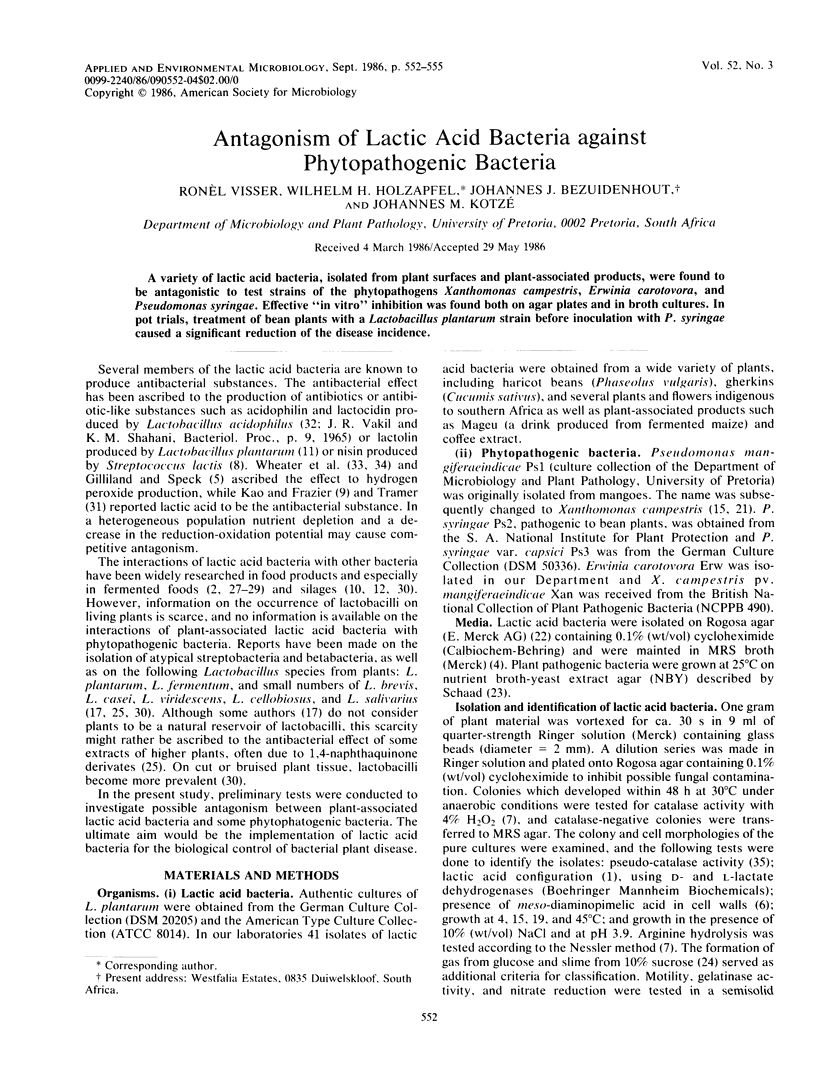
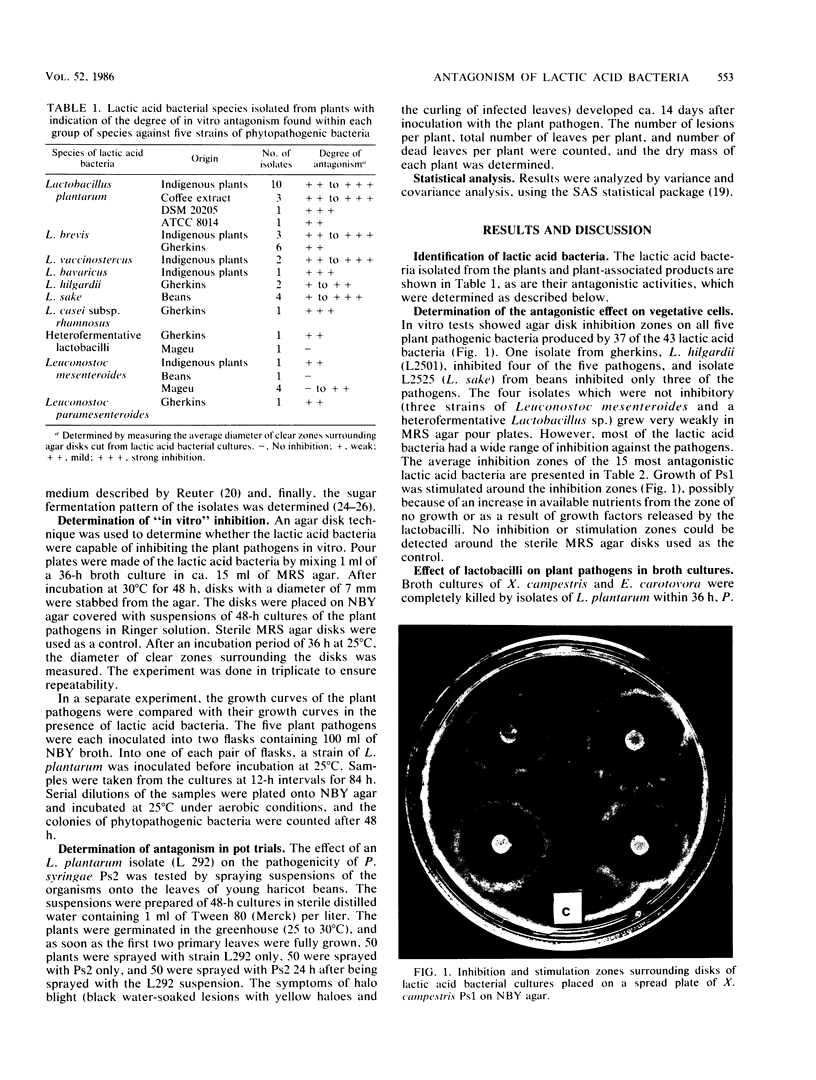
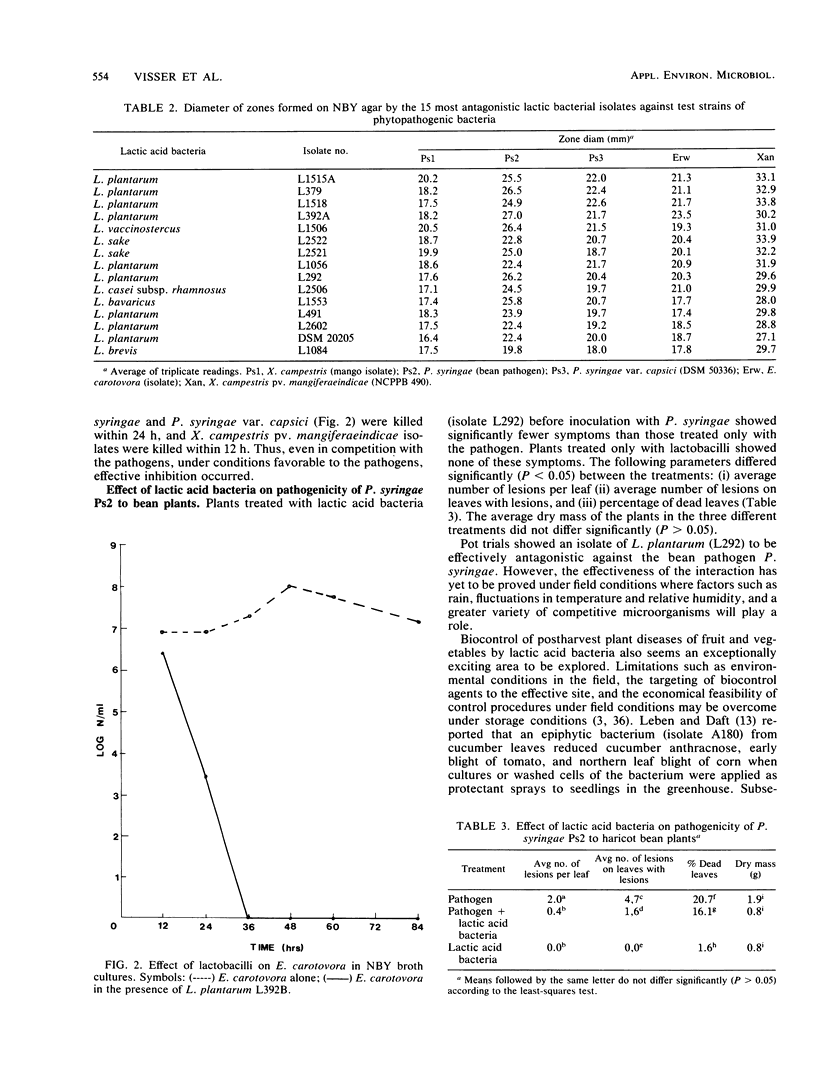
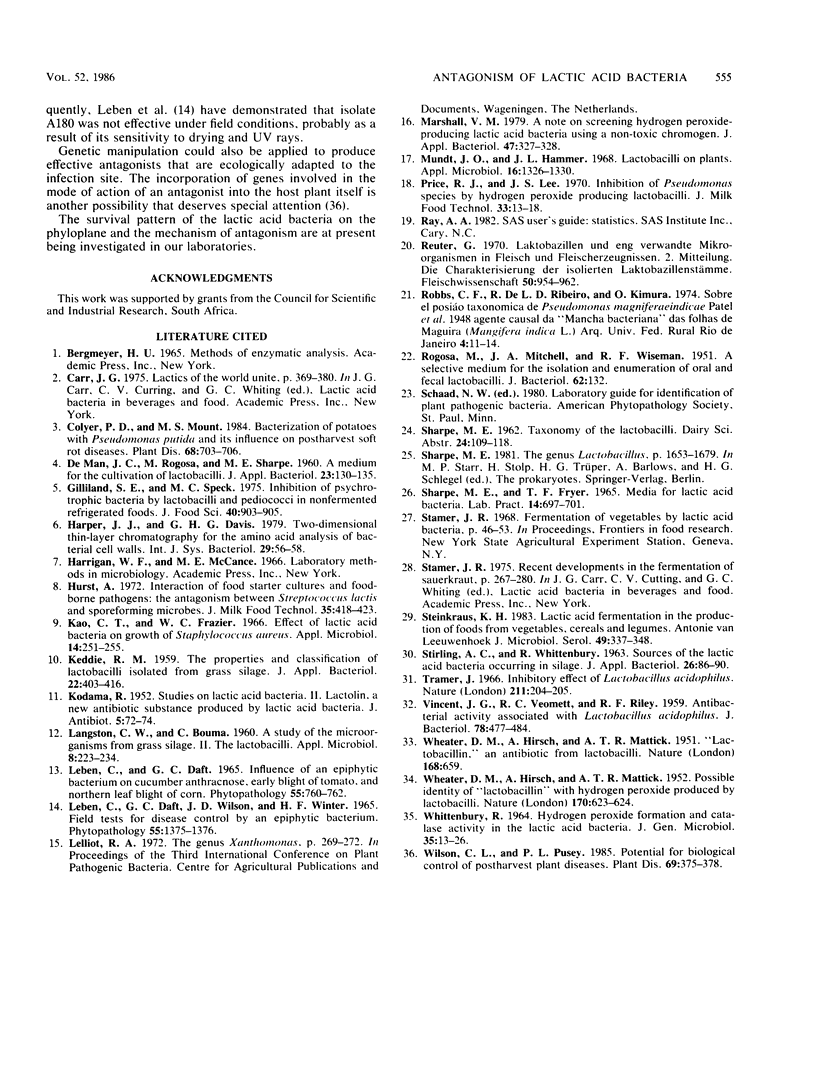
Images in this article
Selected References
These references are in PubMed. This may not be the complete list of references from this article.
- Kao C. T., Frazier W. C. Effect of lactic acid bacteria on growth of Staphylococcus aureus. Appl Microbiol. 1966 Mar;14(2):251–255. doi: 10.1128/am.14.2.251-255.1966. [DOI] [PMC free article] [PubMed] [Google Scholar]
- LANGSTON C. W., BOUMA C. A study of the microorganisms from grass silage. II. The lactobacilli. Appl Microbiol. 1960 Jul;8:223–234. doi: 10.1128/am.8.4.223-234.1960. [DOI] [PMC free article] [PubMed] [Google Scholar]
- Mundt J. O., Hammer J. L. Lactobacilli on plants. Appl Microbiol. 1968 Sep;16(9):1326–1330. doi: 10.1128/am.16.9.1326-1330.1968. [DOI] [PMC free article] [PubMed] [Google Scholar]
- ROGOSA M., MITCHELL J. A., WISEMAN R. F. A selective medium for the isolation and enumeration of oral and fecal lactobacilli. J Bacteriol. 1951 Jul;62(1):132–133. doi: 10.1128/jb.62.1.132-133.1951. [DOI] [PMC free article] [PubMed] [Google Scholar]
- Steinkraus K. H. Lactic acid fermentation in the production of foods from vegetables, cereals and legumes. Antonie Van Leeuwenhoek. 1983 Sep;49(3):337–348. doi: 10.1007/BF00399508. [DOI] [PubMed] [Google Scholar]
- Tramer J. Inhibitory effect of Lactobacillus acidophilus. Nature. 1966 Jul 9;211(5045):204–205. doi: 10.1038/211204a0. [DOI] [PubMed] [Google Scholar]
- VINCENT J. G., VEOMETT R. C., RILEY R. F. Antibacterial activity associated with Lactobacillus acidophilus. J Bacteriol. 1959 Oct;78:477–484. doi: 10.1128/jb.78.4.477-484.1959. [DOI] [PMC free article] [PubMed] [Google Scholar]
- WHEATER D. M., HIRSCH A., MATTICK A. T. R. Possible identity of lactobacillin with hydrogen peroxide produced by lactobacilli. Nature. 1952 Oct 11;170(4328):623–624. doi: 10.1038/170623a0. [DOI] [PubMed] [Google Scholar]
- WHITTENBURY R. HYDROGEN PEROXIDE FORMATION AND CATALASE ACTIVITY IN THE LACTIC ACID BACTERIA. J Gen Microbiol. 1964 Apr;35:13–26. doi: 10.1099/00221287-35-1-13. [DOI] [PubMed] [Google Scholar]



